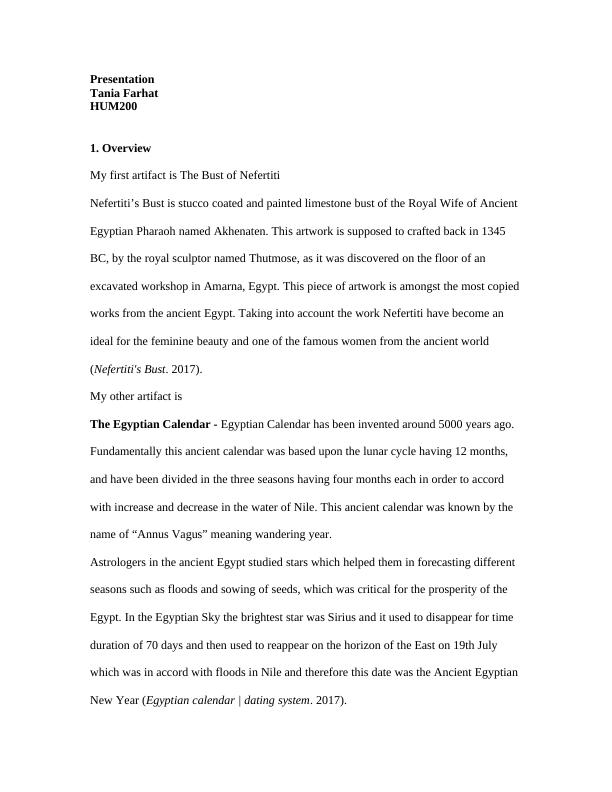Ask a question from expert
Religion, Gods, and Mythology in Ancient Egypt: The Bust of Nefertiti and the Egyptian Calendar
3 Pages795 Words286 Views
Added on 2019-09-18
About This Document
This presentation discusses two artifacts from Ancient Egypt, the Bust of Nefertiti and the Egyptian Calendar, and their significance in showcasing the theme of religion, gods, and mythology. It explores their impact on the audience, evidence of their significance, and their relevance to the study of humanities.
Religion, Gods, and Mythology in Ancient Egypt: The Bust of Nefertiti and the Egyptian Calendar
Added on 2019-09-18
BookmarkShareRelated Documents
End of preview
Want to access all the pages? Upload your documents or become a member.
Cultural Artifacts - Bust of Nefertiti and Egyptian Calendar
|12
|2700
|132
HUM200 Applied Humanities Assignment
|3
|610
|513
Cultural Artifacts of Ancient Egypt: The Bust of Nefertiti and Egyptian Calendar
|7
|1450
|316
Art history of Greek and Egypt - Assignment
|5
|663
|6
